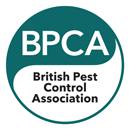Step 1: Identify the Type of Bee
Before considering Bee Removal, you need to understand which species you’re dealing with. Common types in the UK include:
Bumblebees
- Often found nesting in compost heaps, under decking or in bird boxes.
- Generally harmless and non-aggressive.
- Nests are temporary and die out by late summer.
- Best left undisturbed unless posing a safety risk, in which case bee nest removal by a professional pest controller may be required.
Solitary Bees
- Over 240 species in the UK, including mason and mining bees.
- Nest individually in small holes in walls, brickwork or the ground.
- Harmless and excellent pollinators.
- These bees pose no threat and should be left alone.
Honey Bees
- Often seen swarming in large clusters during late spring and summer.
- Swarms are typically temporary as bees search for a new home, but established colonies (e.g. in chimneys or walls) may need professional bee hive removal.
- Contact a professional pest control company for safe collection and relocation.
If Honey Bees have established a colony within a building (such as in chimneys or wall cavities), professional pest control services may be required to safely remove them, as this is a more complex situation. Read more on the different types of bees here.
Click here to view the BBKA’s Bee identification guide.

